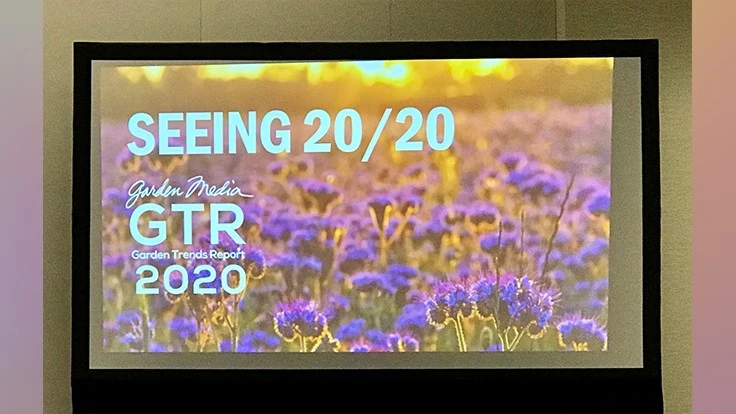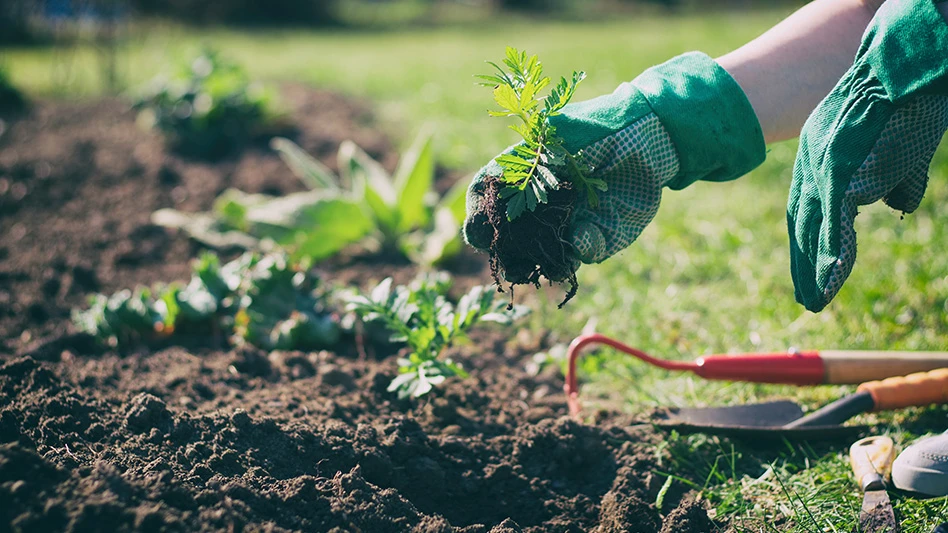
For 20 years, Garden Media Group, a PR firm specializing in home, gardening and outdoor living, has created a trend report that highlights the most popular practices in outdoor spaces. Some of the past trends include succulents as the favored plant in 2011, more Millennial growers in 2015 and more focus on self-care and mental wellness in 2018. While Garden Media Group’s official report comes out mid- to late-August, Creative Director Katie Dubow, gave a peek at the upcoming trends and revolutions in the industry at Cultivate’19 in Columbus, Ohio.
“These are trends that consumers will be asking for,” Dubow said. “If you’re a retailer, they’re going to come into your store and look for these things. If you’re a grower, it’s also important to get ahead of these things and stay on top of these trends for the very same reason.”
Cities of the future
“By 2050, 70% of the world’s population will live in cities,” Dubow said. “But being in a city disconnects us from nature. As the world continues to urbanize, creating green cities is one of the major keys to having successful growth.”
Dubow said the big trend in cities is CRD — central recreation districts — essentially, community and connection spaces. “It needs to be a marriage of green infrastructure and horticulture. We are the ambassadors to change in making the cities more sustainable, viable and overall, beautiful.”
Circular economy
As of now, only 9% of consumed materials are re-used, Dubow said. But a circular economy can minimize waste and make the most of resources.
“The circular economy does more with less,” Dubow said. “As leaders in our industry, we have a responsibility to be sustainable. This is not replacing people’s buying of your goods. This is not a practice that’ll run your business to the ground. We just need to help them bring them back to life.”
Green collar jobs
According to EuroMonitor, a platform that focuses on market analysis, U.S. gardening grew 6% in 2018 and reached $40 billion as an industry. By 2023, gardening is expected to reach $49.3 billion, which calls for more labor. By 2025, four-year university enrollments are expected to drop by 15% due to the rising cost of college. All of these factors, Dubow said, are indicators that degree requirements will change.
“Careers in horticulture may only need an associate or vocational program for a job,” she said. “And there are people coming out of college who are unaware of our industry, but will soon know because sustainability is the future. We have to make these jobs more accessible to them.”
Endangered soil
According to The United Nations Food and Agricultural Organization, soil will be gone by 2050. Why? Because erosion and deforestation have washed away a third of the world’s topsoil, Dubow said. If current trends continue, soil will be gone by 2050.
One way to decrease soil endangerment is by following soil-friendly habits. For example, Dubow said it’s importance to practice regenerative and organic gardening. One example is by composting, “which reduces household waste by 40%,” she said.
Thinking outside the house
“It wouldn’t be a trend report if it didn’t have something about pollinator or houseplants,” Dubow said. “The house plant trend is the new garden club. People are getting together to talk about plants, which creates community.”
Dubow said houseplants are growing more popular because, “as living spaces change, we’re living in smaller places with less yard, but people still want plants.”
The frog whisperer
Most people tend to think of pollinators as the only important insects to the ecosystem, but Dubow said amphibians are equally important. “A garden filled with amphibians indicates a healthy garden,” she said. “If you have no frogs, you certainly have no pollinators.”
Much like creating a pollinator garden, Dubow suggested creating a space where amphibians can thrive and reproduce.
Not just some fungi
According to Dubow, mushrooms are one of the most important additions to nature’s recycling system. “If we didn’t have mushrooms, the rest of our plant life wouldn’t exist,” she said.
Some mushrooms help clean up oil spills and absorb pollution to fight off smallpox and flu viruses. If they didn’t exist, Dubow said plants wouldn’t either because they break down organic matter and create rich soil. She suggested offering mushroom-based products and workshops to educate people on mushrooms and how to grow them.
Indigo
Lastly, one of the most popular garden trends is the color of the year —indigo. Dubow said blue plants are always the most sought after hue in the garden. To appeal to consumers and remain trendy, she suggested accessorizing with indigo pots, pillows and using indigo in displays; maybe even hosting a blues themed night with a band and blue themed décor.
“Whatever you decide to do,” Dubow said, “you don’t want to change your entire business. You don’t want to change every single thing based on the trends. It’s important that you stay true to your brand.”
Latest from Garden Center
- NewGen Boxwood added to Proven Winners ColorChoice line
- Terra Nova releases new echinacea variety, 'Fringe Festival'
- Sakata Seed America celebrates renovation of Cal Poly greenhouse complex
- American Horticultural Society names winners of 2025 AHS Book Awards
- American Horticultural Society announces winners of 2025 Great American Gardeners Awards
- Ask HR: We got a bad review after an employee having a bad day snapped at a customer. What do I do?
- How to cultivate connections with vendors
- The Growth Industry Episode 3: Across the Pond with Neville Stein





